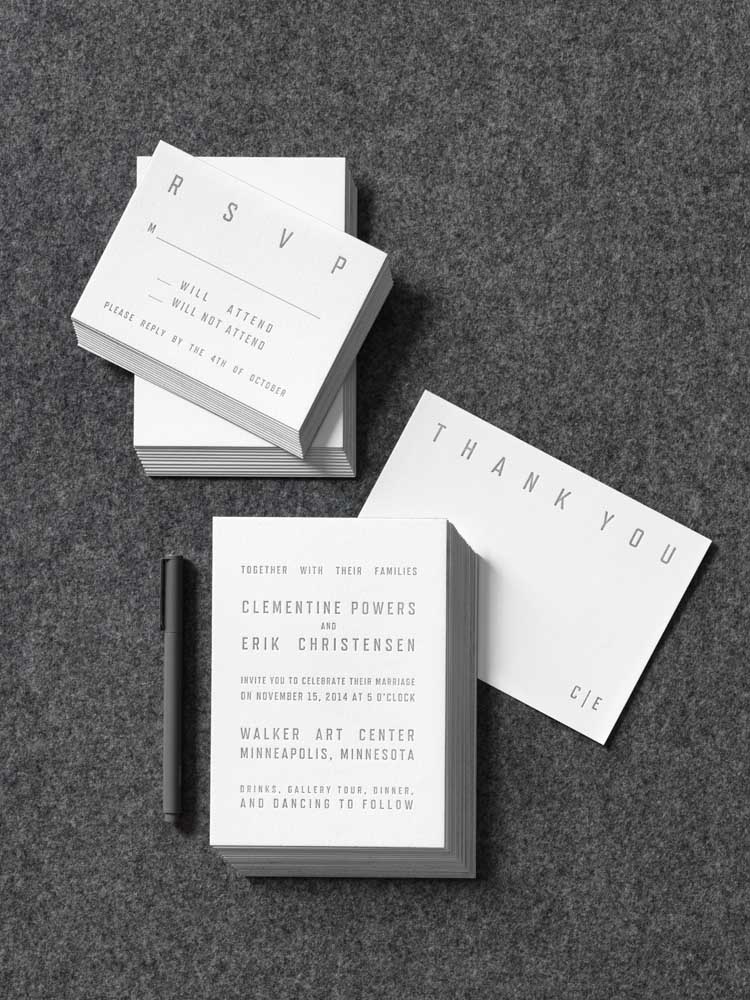Stationery to set the tone for a wedding
Published 12:00 am Sunday, February 23, 2014

- Jonny Valiant via New York Times News ServiceLetterpress printing gives an invitation suite an artisanal, one-of-a-kind feel.
How your wedding invitations are printed is just as important as their design. And it’s one of the first major decisions you make when selecting your suite. Here’s the skinny on stationery production — consider it all the news that’s fit to print!
Letterpress
Trending
What it is: With roots in the 15th century, letterpress is the oldest print form in use. Blocks of metal or polymer plates with raised type are inked and pressed onto paper to indent letters onto the front and leave the back raised for a tactile, handcrafted appearance.
When to use it: You like an artisanal look with slight variations in each piece, and you chose a design with thin lines and fine type, which work best with letterpress. (Larger shapes can suffer from what printers call “salty color” — patchy ink placement that lets paper show through in spots.)
Timeline and costs: A letterpress order can take from two to four weeks. It’s labor-intensive and done by hand, making it a pricier process, with the cost of 100 invites ranging anywhere from $500 to $1,500. The more ink colors you use, the higher the price.
Go-to letterpress sources:
• Bella Figura for an extensive library of suites to suit all tastes (bellafigura.com)
• Sesame Letterpress for printing any design you submit (sesameletterpress.com)
Trending
Engraving
What it is: Engraving is made by etching a design in reverse onto a copper or steel plate, depositing ink into the impressions, then pushing paper onto the template with a 3,000-pound weight. This creates raised lettering on the front of the card; you’ll feel each character if you run your finger across the back.
When to use it: If you want to signal that yours is a formal affair. Unlike some other techniques, it also takes well to suites that pair light type and dark paper, which showcase the thick, matte ink that engravers use. One nice bonus: Some stationers give brides the plate used in their order as an elegant keepsake.
Timeline and costs: This painstaking process is the most involved — and can be the most expensive — of the methods, with the price of 100 cards ranging from about $550 to more than $2,500. If it’s just your type, plan ahead: Completing an order can take up to six weeks.
Go-to engraving sources:
• Dempsey & Carroll for being the final word on invitation etiquette (dempseyandcarroll.com)
• Mrs. John L. Strong for chic designs since 1929 (mrsstrong.com)
Thermography
What it is: Thermography, like engraving, is a raised-print type, but no impression is made. That’s because ink is applied directly to paper, then dusted with a resinous powder while still wet. The ink and powder are heated, and the letters rise, creating a 3-D effect.
When to use it: If you want the appearance of engraving at a lower price point. But feel free to get creative, because thermography offers an almost unlimited variety of typefaces. Keep in mind, though, that thermographed letters are shinier than engraved ones, and their color is slightly less precise, since it’s an ink-and-powder mix.
Timeline and costs: Thermography takes less work and time than engraving; an order can be fulfilled in about a week (once you’ve completed the design process). It costs around 50 percent less, too, with 100 pieces going for $250 to $500.
Go-to thermography sources:
• Crane & Co. for timeless, classic styles (crane.com)
• Lion in the Sun for creatively working within almost any budget (lioninthesunps.com)
Flat printing
What it is: Flat printing is a catch-all term used for offset and digital techniques, both of which create stationery that’s smooth to the touch. Offset involves transferring images from a metal plate to a rubber surface to paper with a lithographic press. Digital is a simpler process that prints right from a computer file. Used for commercial media like magazines and catalogs, flat printing is a low-cost way to get crisp, clean images.
When to use it: While digital printing has come a long way, offset still offers the most luxurious options for paper selection, and its type is a tad sharper. But costs go up the more colors you use, while with digital, extra hues carry no extra charge.
Timeline and costs: Flat printing is a great option in a time crunch, with a turnaround of just a few days to a week. And it’s the most economical of the major printing methods; both offset and digital will run you about $250 per 100 pieces.
Go-to flat-printing sources:
• Minted for affordable designs (minted.com)
• Wedding Paper Divas for easy-to-customize looks and extras such as photo books (weddingpaperdivas.com)








